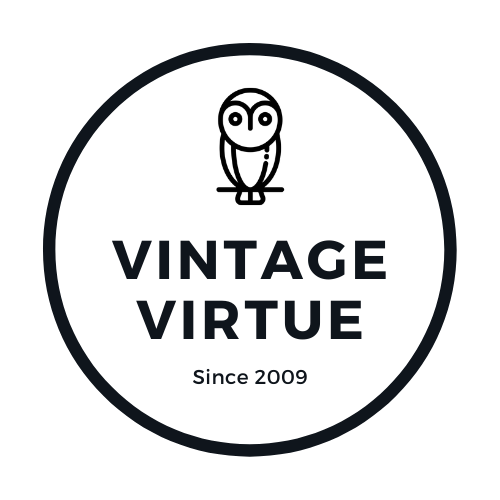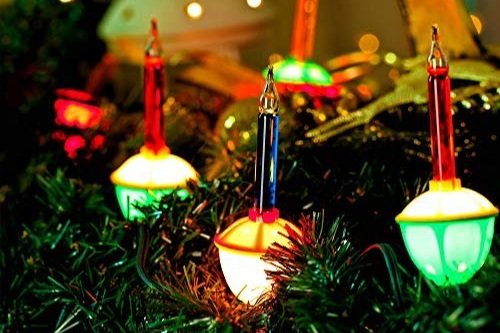Fabulous Mid-Century Christmas Trends
The 1950s ushered in a new era of Christmas decoration trends. There was a new sense of prosperity and a unique wealth of machinery that allowed for mass-produced and lower-priced decorations. These outrageous and bold trends reflected post-World War II optimism and the new standard of living.
Once dependent upon Germany for ornaments, toys, and even most Christmas traditions, America became self-sufficient in the post-War years. Christmas decorations and toys now manufactured in the United States were much less expensive than German equivalents. American Christmas customs, like visits to see department store Santas and writing letters to Santa at the North Pole, remained popular during America's Post-War years. Still, the era generated contributions that have endured to become traditions.
Christmas Tree Trends
The space-obsessed 1950s helped give rise to futuristic aluminum Christmas trees, which came in silver, pink, and even purple. These new trees rotated on electric tree stands, which featured a lighted 'color wheel' that enhanced and changed the color of the tree. Some considered these wildly unorthodox trees irreverent due to their nontraditional appearance. Today these original vintage aluminum trees, especially in the rarer colors, are pretty collectible.
Artificial trees, which came in green or white, featured branches that could be folded flat for convenient storage. These artificial trees were trendy among people whose homes had limited space that prohibited a live tree. Live trees, scarce during the 1930s and 40s, became available again following World War II and American families bought roughly 31 million live trees during the 1954 Christmas season alone.
In the later part of the 1950s, the flocked Christmas tree became popular among people looking to bring a bit of snowy outdoor charm indoors. General Mills sold Sno-Flok home kits with the option to flock in standard white or 'decorator colors,' including pink. These kits could be used on live or artificial trees, with the flock applied with any 'exhaust type' vacuum cleaner.
Ornament Trends
The previously popular handmade German ornament trade struggled after World War I, which prompted American innovators to mechanize the process. Mass-produced ornaments made in one factory were then sent to other companies to be hand decorated. The largest of these American companies was "Shiny-Brite," a brand established by German American immigrant Max Eckardt.
Created and handmade in the 1930s, the original "Shiny-Brite" ornaments earned their name from the silver nitrate inner coating that kept them shiny and "brite" year after year. By the 1950s, production reached a rate of 1,000 per minute. The 1950s was the "Shiny-Brite" zenith, with Eckardt operating four New Jersey factories to keep up with the demand.
Toward the end of the 1950s, Styrofoam (Polystyrene) balls decorated with sequins, rhinestones, ribbons, and tiny beads appeared as another favorite ornament trend. Consumers often preferred the durability of these plastic baubles over traditional glass. Modern machinery made the new plastic ornaments inexpensive and abundant.
Tree Lighting
New technologies and trends applied to Christmas lighting as well, creating new shapes and sizes of lights; now available were bubbling lights, electric flameless candles, figural lamps, and novelty shapes, such as stars and hearts. The traditional teardrop shape we associate with vintage Christmas lights became the norm by the end of the 1950s.
Bubble lights were a popular mid-century trend in Christmas tree lighting. Each bubble light was composed of a candle-shaped glass tube that held a methylene chloride liquid that bubbled from the electricity applied to the light's metal screw-in base. By the decade's end, General Electric had introduced twinkle bulb lights which flashed on and off to create the twinkle effect.
Christmas Figurines
By 1865, German woodworker Wilhelm Fuchtner made the first commercially produced nutcracker dolls. His model, based on a character from Heinrich Hoffmann's popular children's book King Nutcracker and Poor Reinhold, had just begun selling the traditional nutcracker figures when Tchaikovsky's famous ballet, The Nutcracker, was released in 1892. Because the ballet, set during Christmastime, prominently features a nutcracker character, the products quickly became associated with Christmas décor. German nutcrackers found a broad audience in post-war America as U.S. GIs brought them home after the war. Several makers, such as Steinbach, still produce limited editions of these traditional nutcrackers.
The 1950s also saw other iconic decorative figurines and Christmas ornaments come to prominence, including elves, reindeer, and Christmas bells. Reindeer had been associated with Christmas and specifically Santa Clause since the 1930s, and in 1939 a manager at the Montgomery Ward department store in Chicago decided the store should create its own children's book for its annual holiday promotion, and Rudolph the Red-Nosed Reindeer was born. The popularity of Rudolph hit an all-time high in the 1950s after the release of the associated song, Rudolph the Red-Nosed Reindeer, sung by Gene Autry, became the first number 1 hit of the 1950s. Decorative Christmas reindeer in all sizes, colors, and styles became ubiquitous throughout the decade. These vintage decorations are still highly sought after and collectible today.
Christmas Lawn Decorations
Blow-mold lawn ornaments have been available in the United States since the 1940s, but the popularity of the pink flamingo in the late 1950s brought these decorations into the zeitgeist. Union Products was the most successful American blow-mold company, remaining in business until 2006. Other companies, like Empire Plastic Corporation, made both blow-mold ornaments and popular toys.
While blow-mold lawn decorations aren’t just for Christmas, they are more commonly seen during the holiday season. Blow-mold ornaments before 1956 were two-dimensional, but after that, Union Products and other companies began making three-dimensional ornaments that included a small light bulb for added visibility and use at night.
Making Your Christmas a Mid-Century Celebration
As the saying goes, everything old becomes new again, and these once-popular holiday decorating ideas are back today. Decorating for Christmas can be simple and inexpensive. With a few key pieces, you can achieve an attractive mid-century look that will make your home feel festive and inviting. Check out the Christmas décor selection in our vintage shop to add some authentic mid-century pizazz to your holiday style.







